Q
Does the XC90 hold value?
The Volvo XC90 performs above average in terms of value retention in the Malaysian used car market. Its ability to hold value mainly benefits from brand recognition, a strong safety reputation, and a relatively stable supply - demand relationship. As a luxury SUV, the XC90 features a high - strength body structure and advanced safety configurations (such as the City Safety system). These core selling points have long been highly regarded by Malaysian consumers. Coupled with the price advantage of locally assembled (CKD) models, the depreciation rate in the first three years is slowed down.
Compared with its German competitors, the residual value rate of the XC90 in the fifth year usually remains between 45% and 50%. However, the hybrid version may affect the confidence of some buyers due to the battery maintenance cost. It is recommended that Malaysian owners have regular maintenance at authorized service centers and keep complete records, which can significantly increase the resale price.
It's worth noting that the value retention rate of luxury cars is highly influenced by the economic environment. For example, during the chip shortage in 2022, the prices of used cars generally increased. But after the market returned to normal in 2023, the prices of XC90s over 5 years old stabilized. If you plan to hold the car for a long time, choosing a mainstream configuration like the T8 Inscription version will make it easier to resell.
Special Disclaimer: This content is published by users and does not represent the views or position of PCauto.
Related Q&A
Q
How expensive is it to maintain a Volvo XC90?
In Malaysia, the maintenance costs for the Volvo XC90 sit in the upper-middle range for luxury SUVs. Regular services like oil changes and filter replacements typically run between RM800 to RM1,200 per visit, depending on the type of oil used and the specific pricing at each authorized service center. Major services, which might include brake pad replacements and transmission fluid changes, can set you back anywhere from RM3,000 to RM5,000. It’s definitely advisable for owners to stick to the official maintenance schedule to keep the vehicle performing at its best and to avoid even heftier repair bills down the line.
As a luxury SUV that prioritizes safety and technology, the XC90 does come with relatively higher maintenance costs. However, Volvo’s reputation for durability and high-quality components means lower long-term failure rates, which helps offset those unexpected repair expenses. Malaysia’s authorized Volvo service centers offer transparent maintenance packages, so owners can get a clear idea of costs upfront and plan their budgets accordingly. It’s also worth considering an extended factory warranty plan to cover potential high-cost repairs later in the vehicle’s life.
When stacked against other luxury brands, Volvo’s maintenance fees are reasonably competitive. And let’s not forget—its top-tier safety tech and eco-friendly interior materials are big reasons many owners are happy to invest that little bit extra.
Q
What is the life expectancy of a XC90?
The Volvo XC90, as a luxury SUV, typically enjoys a service life of 15 to 20 years in the Malaysian market, though this can vary depending on maintenance upkeep, driving habits, and local climate conditions. Sticking to regular oil changes, transmission fluid replacements, timing belt services, and strictly following the manufacturer's recommended maintenance schedule can significantly extend its lifespan. Malaysia's hot and humid environment can accelerate the aging of rubber components and electronic parts, so it's advisable to regularly inspect chassis bushings, weatherstripping, and wiring harnesses. The Drive-E engine under the hood has a solid reputation for reliability, but using the correct grade of fully synthetic oil is a must to ensure it performs at its best. For those looking at a used XC90, pay close attention to the air suspension (if equipped) and the turbocharging system – these are common high-maintenance areas on premium models. It's worth noting that Volvo's safety tech, like the City Safety system, tends to hold up well even in high-mileage vehicles, which is a core strength of the brand. With proper care, the XC90 is more than capable of serving Malaysian families for the long haul. Its durability is on par with German rivals in the same class, but it often comes with a more attractive maintenance cost advantage.
Q
Which Volvo XC90 to avoid?
Honestly, every version of the Volvo XC90 brings its own unique strengths and character—there’s really no model you should outright avoid. But if you’ve got specific needs or priorities, there are a few things worth keeping in mind. Let’s break it down. If you’re working with a tight budget but still want solid features, the 2020-2022 models might be tricky since some of those are no longer in production. That could mean higher costs or more hassle down the line when it comes to maintenance and finding replacement parts.
Now, if value for money is your main goal, the 2025 Volvo XC90 Ultra T8, priced at RM 434,888, sits on the higher end. If you don’t really need much all-electric range, you won’t get to fully leverage its plug-in hybrid benefits, making it a bit of a stretch cost-wise. And let’s say you’re not overly fussed about the latest power upgrades or tech tweaks—then the incremental improvements in newer models might not feel worth the extra cash. In that case, going for an older model could save you a pretty penny upfront.
Q
Is the XC90 a large SUV?
Yeah, the Volvo XC90 is definitely a full-size SUV. It stretches close to 5 meters in length and has a wheelbase over 2.9 meters, offering a three-row, seven-seat layout. The space is roomy and comfortable, making it a solid choice for Malaysian families or anyone needing to haul multiple passengers. Over here in Malaysia, the XC90 has built up a good following thanks to its Scandinavian luxury design, cutting-edge safety tech, and strong performance. The T8 plug-in hybrid, in particular, strikes a nice balance between power and eco-friendliness, which aligns perfectly with what local folks expect from a premium SUV. Now, full-size SUVs generally give you better ground clearance and cargo capacity, but that larger footprint can feel a bit cumbersome when navigating the tighter streets of cities like Kuala Lumpur. So, it's smart to really think about your daily driving needs before taking the plunge. Rivals in this segment include German heavyweights like the BMW X7 and Mercedes-Benz GLS – definitely worth checking out how they stack up in terms of space, features, and overall driving feel before making a decision. Given Malaysia's hot and rainy climate, the XC90's panoramic sunroof and four-zone climate control are nice touches that boost comfort. And of course, Volvo's City Safety system adds an extra layer of security when dealing with tricky traffic situations.
Q
What is the best year of XC90 to buy?
When shopping for a Volvo XC90 in Malaysia, the second-generation models from 2016 onwards are your best bet – especially the post-2018 facelift versions. These come with the more refined Drive-E turbo engines (T5/T6/T8), an upgraded Sensus infotainment system, and revised suspension tuning that better suits local road conditions. If your budget stretches further, the 2020+ models step up with standard Pilot Assist semi-autonomous driving and the CleanZone air purification system, both of which are surprisingly handy in our tropical climate.
A quick heads-up: early 2016-2017 builds had occasional electronic system lag issues, so we’d strongly recommend going through the Volvo Selekt certified pre-owned program to get that factory warranty peace of mind. What really sets the XC90 apart in its class is the standard 7-seat layout and that typically Volvo超高安全配置 – including the rollover protection system. That said, it’s worth cross-shopping against the Lexus RX or BMW X5 from the same model years. European cars do tend to have slightly higher maintenance costs here compared to Japanese rivals, though Volvo’s factory 5-year free servicing plan helps take the edge off that difference.
Q
What is the price of Volvo XC90 in India?
The Volvo XC90 is priced roughly between 8 million to 12 million Indian Rupees in India (that's around 440,000 to 660,000 Malaysian Ringgit, though exchange rates can fluctuate). The exact figure hinges on the specific trim level, regional taxes, and any dealer promotions on offer. As a luxury SUV, the XC90 has earned global acclaim for its Scandinavian design ethos, cutting-edge safety tech, and plug-in hybrid options, and in India, it's similarly targeting the premium buyer demographic.
For our Malaysian readers, while local pricing will differ from India's, you can get a sense of its positioning. The XC90 is primarily sold in Malaysia via imported channels, which means its price tag tends to be on the higher side due to tariffs and import duties. Key highlights of the vehicle include those distinctive Thor's Hammer LED headlights, the intuitive Sensus infotainment system, and the comprehensive City Safety suite. Power-wise, there's a range to choose from, including T5, T6, and the T8 plug-in hybrid – the latter striking a nice balance between performance and eco-friendliness.
If you're considering getting behind the wheel of one, we'd recommend checking quotes from authorized Volvo dealers in Malaysia. Also, keep an eye out for the warranty packages or financing deals that Volvo Asia Pacific frequently rolls out – they can sweeten the deal.
Q
Is it worth buying a Volvo XC90?
Whether a Volvo XC90 is worth buying in Malaysia really comes down to your needs and budget. This SUV is known for its top-notch safety, plush interior, and that distinct Scandinavian design flair – it’s a solid pick if you’re a family-focused driver who doesn’t want to compromise on quality.
The XC90 comes loaded with tech right out of the box, like the City Safety system and Pilot Assist semi-autonomous driving features. Power-wise, you’ve got options: T5, T6, and the T8 plug-in hybrid. The T8, in particular, stands out for fuel efficiency, which is a big plus given Malaysia’s not-so-friendly fuel prices.
Inside, space is generous, and the three-row seating setup is practical – though let’s be real, that third row is better suited for kids or short hops rather than full-grown adults on long drives.
Now, the flip side: Volvo’s after-sales network in Malaysia isn’t as extensive as the German or Japanese brands. Maintenance and repair costs can run higher, and when it comes time to sell, it won’t hold its value as well as a Lexus RX or BMW X5.
If you’re drawn to unique design, prioritize cutting-edge safety, and can swing the higher ownership costs, the XC90 is a luxury SUV that deserves a spot on your shortlist. But don’t stop there – the Audi Q7 and Mercedes GLE are strong contenders too, each with their own strengths. At the end of the day, take ’em for a test drive and go with what best fits your real-world needs.
Q
How to check the oil level on a 2018 Volvo XC90?
To check the engine oil level of the 2018 Volvo XC90, first make sure the vehicle is parked on a level surface and turn off the engine for at least 10 minutes to allow the oil to drain back into the oil pan. Then open the hood and find the oil dipstick, usually a yellow or orange pull - ring. Pull it out, wipe it clean with a clean cloth, re - insert it, and then pull it out again. Check if the oil mark is between the "MIN" and "MAX" markings on the dipstick. If it's below the "MIN" mark, you need to add 0W - 20 engine oil that meets Volvo's certification.
Given the hot and humid climate in Malaysia, it's recommended to regularly check the condition of the engine oil, as high temperatures can accelerate oil oxidation. Also, be aware of the electronic oil gauge system equipped in the Volvo XC90. You can view the digital oil level display through the vehicle information menu on the central control screen, which is more accurate than the traditional oil dipstick.
During daily maintenance, besides paying attention to the oil level, also note the color of the oil. If you find it has turned black or contains metal debris, replace it immediately. It's advisable to follow the manufacturer's maintenance cycle of every 10,000 kilometers or 12 months. Using the synthetic oil recommended by the factory can better protect the turbocharged engine and maintain good lubrication performance even in Malaysia's mountainous terrain.
Q
How to check tire pressure on 2018 Volvo XC90?
To check the tire pressure of the 2018 Volvo XC90, first make sure the tires are cold (the vehicle has been parked for at least 3 hours or driven for no more than 2 kilometers). Then, use a digital tire pressure gauge or the tire pressure detection equipment at a gas station/repair shop. Unscrew the tire valve cap, align the tire pressure gauge with the valve stem and press it firmly, and read the displayed tire pressure value. Compare it with the vehicle's recommended value (usually indicated on the driver's side door frame label, inside the fuel tank cap, or in the user manual. The standard tire pressure for the XC90 is approximately 230 - 250 kPa). If the tire pressure is insufficient, use an air pump to inflate the tires to the recommended value. If it's too high, press the center of the valve stem to release air. In the hot climate of Malaysia, the tire pressure may rise slightly due to high temperatures, but there's no need to deliberately release air because the vehicle's recommended value already takes temperature changes into account. Checking the tire pressure once a month regularly can ensure driving safety and fuel efficiency. At the same time, it's recommended to check the spare tire pressure (if equipped), and note that abnormal tire pressure may cause uneven tire wear or a decline in handling performance. If the tire pressure warning light appears on the dashboard, it needs to be dealt with immediately.
Q
What is the fuel economy of a 2018 Volvo XC90?
The 2018 Volvo XC90 comes in versions such as the T5 and the T8 Twin Engine Inscription. The official combined fuel consumption of the T5 version is 7.9L per 100km, while that of the T8 Twin Engine Inscription version is 2.1L per 100km. However, the actual fuel economy can be affected by multiple factors.
In terms of driving habits, aggressive driving styles like rapid acceleration and sudden braking can increase fuel consumption. On the contrary, good habits such as smooth starts and constant - speed driving can help reduce fuel consumption. Regarding road conditions, in congested urban areas where vehicles frequently start and stop, fuel consumption will go up. On the other hand, on highways where vehicles can maintain a stable high - speed, fuel consumption is usually lower.
If the vehicle is overloaded, for example, when it is often full of passengers or carrying a large amount of cargo, the engine has to output more power, which also leads to an increase in fuel consumption. In addition, good vehicle maintenance, such as regular servicing and maintaining proper tire pressure, is beneficial for keeping fuel consumption low.
Latest Q&A
Q
jaecoo j7 how many seater
The Jaecoo J7 is a luxury compact SUV with a 5-seat layout, perfect for Malaysian families or anyone after a comfy ride. As a fresh face in the segment, the J7 prioritizes practicality in its space design – the rear seats fold down in sections, letting you flexibly expand the boot space to handle daily errands or short getaways. Malaysian buyers will probably be drawn to its features, too – think smart infotainment, advanced driver assists, and an air-con system that’s built to handle our tropical heat. Under the hood, we’re expecting engine options that balance fuel efficiency with solid performance, ideal for Malaysia’s mixed bag of road conditions. If you’re in the market for an SUV, besides just the seat count, keep an eye on safety ratings, warranty coverage, and how good the local after-sales network is – all these play a big part in how happy you’ll be with the car long-term. It’s worth noting that SUV demand in Malaysia just keeps growing, and 5-seaters are a hit for city driving and family use thanks to their flexibility and better fuel economy.
Q
jaecoo j7 from which country
The Jaecoo J7 is a compact SUV from Jaecoo, an emerging sub-brand under China's Chery Group. It's all about youthful design and an urban off-road vibe, developed and built using Chery's existing tech infrastructure. Under the hood, you'll find a 1.6T turbocharged engine paired with a 7-speed dual-clutch transmission, and it even comes with four-wheel drive. The suspension is tuned to balance on-road comfort with light off-roading capabilities. Inside, there's a sleek dual-screen setup with smart connectivity features.
For the Malaysian market, Jaecoo, being the new kid on the block, is gradually setting up its sales network through local partners. The right-hand-drive version of the J7 has already secured Vehicle Type Approval (VOC) in Malaysia and is expected to be imported as a Completely Built-Up (CBU) unit. Pricing is likely to target the mid-range SUV segment, positioning it to go head-to-head with the likes of the Honda HR-V and Toyota Corolla Cross.
It's worth noting that Chery Group has been ramping up efforts in Southeast Asia in recent years. Their Omoda and Tiggo series have already built up a decent reputation in Malaysia. Jaecoo, however, is focusing on rapid product iteration through modular platform technology, a strategy that should help shorten the time it takes to bring new models to market.
Malaysian consumers eyeing the J7 should keep an eye out for official local spec releases. Key points to watch will be the air-conditioning system and anti-rust treatments, which should be optimized for the tropical climate, as well as suspension settings tailored to local road conditions.
Q
how much is a mercedes e300
In Malaysia, the price of a Mercedes-Benz E300 can vary depending on the model year, configuration options, and whether it's a brand-new or pre-owned vehicle. Right now, the starting price for a brand-new E300 typically falls between RM 400,000 and RM 500,000. That said, the exact figure might shift based on selected add-ons, ongoing promotions, or individual dealership policies.
Slotting in as a mid-to-high-end offering in Merc's E-Class lineup, the E300 packs a 2.0-liter turbocharged engine paired with a 48V mild-hybrid system, churning out a solid 258 horsepower. It also comes loaded with the snappy MBUX infotainment system and a suite of smart driver-assistance features, making it a solid pick for folks who want a mix of luxury and cutting-edge tech.
Malaysian demand for Mercedes models is pretty strong, and the E-Class, in particular, is a hit for both business and family use. If you're interested, your best bet is to reach out directly to authorized dealers to get the latest quotes and set up a test drive. It’s also worth checking out pre-owned E300s from different years—you might find better value for your ringgit there.
On a side note, Malaysia’s import duties on foreign cars are pretty steep, which is one reason why Mercedes models carry a premium price tag locally. Even so, the strong resale value and the brand’s reputable badge keep plenty of loyal customers coming back.
Q
difference between mercedes e300 and e350
The Mercedes-Benz E300 and E350 are two luxury sedans that sit close in positioning but diverge when it comes to performance, with the key differences lying under the hood and in their feature sets. The E300 typically rocks a 2.0-liter four-cylinder turbo engine, cranking out around 258 horsepower. Step up to the E350, though, and you're looking at a beefier 3.0-liter six-cylinder turbo that pushes out approximately 362 horsepower—way more grunt for drivers who crave that extra zip behind the wheel.
Here in Malaysia, both models come loaded with that signature Mercedes luxury interior and all the tech you'd expect, like the MBUX infotainment system and a solid suite of driver-assistance features. But the E350 often gets the upper hand with fancy extras, think air suspension or a premium sound system upgrade. When it comes to fuel economy, the E300 has the edge thanks to its smaller engine, sipping a bit less petrol than the E350.
For Malaysian buyers, the choice really boils down to budget and what you prioritize. The E300 is your go-to for everyday commuting—smooth, comfortable, and gets the job done. The E350, on the other hand, is for those who want that extra performance kick. Either way, Mercedes has a strong service network here, so both cars benefit from the brand's reliable after-sales support—whether it's routine maintenance or repairs, you're covered. Plus, Mercedes models hold their value pretty well in Malaysia, so over the long haul, the running costs stay relatively manageable.
Q
how to replace third brake light mercedes 190e
Swapping out the third brake light (that's the high-mount one) on a Mercedes 190E isn't rocket science, folks. First things first, you'll need the right replacement bulb or LED module. I'd definitely recommend sticking with OEM parts or reputable aftermarket brands here – trust me, it's worth it for the longevity.
To get started, pop open the trunk. You'll need to locate the interior trim panel where the third brake light lives. Usually, you'll have to carefully pry off the retaining clips with a plastic trim tool – take it easy, you don't want to scratch up that interior. Once the old light is out, disconnect the electrical connector. When installing the new unit, make sure the plug lines up correctly, then give it a quick test to ensure the light works. If everything checks out, pop the trim panel back into place.
For our Malaysian readers, given the hot and rainy climate, it's a good idea to periodically check the seal of the tail light to prevent water from seeping in and causing a short circuit. Also, let's remember the 190E is a classic, so its electrical system is a bit more old-school. If you find yourself burning through bulbs frequently, that could be a sign of voltage irregularities or aging wiring – in that case, best to have a professional workshop take a closer look.
And hey, keeping those lights clean is part of regular maintenance and goes a long way in boosting road safety, especially during Malaysia's rainy season when mud and grime can really obscure your lights. If you're not feeling confident about doing this yourself, no problem – just hit up your local Mercedes specialist. They know these older models inside out and can get the job done efficiently.
View MoreRelated News
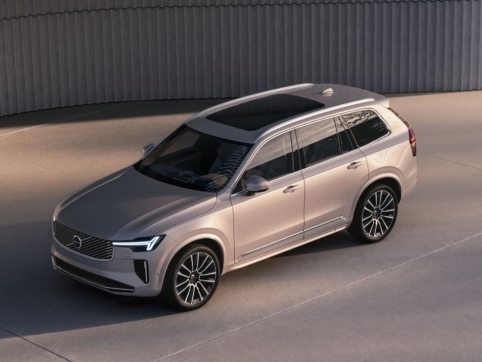
Volvo XC90 Facelift Launched in Malaysia with Exterior and Interior Changes
JohnApr 11, 2025
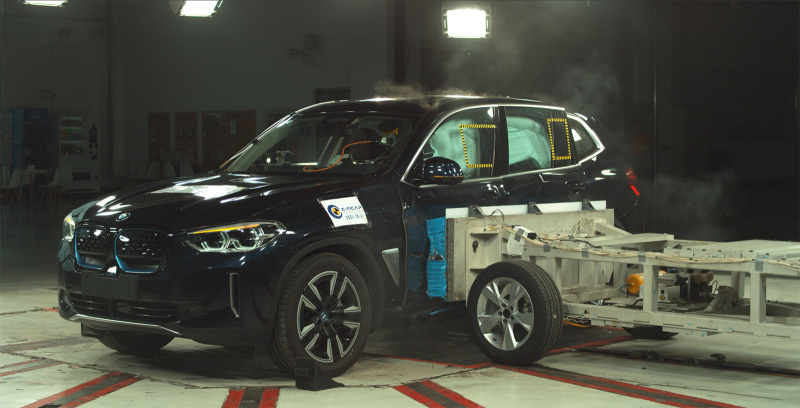
Structure, Materials, Airbags, What are the main evaluation criteria for automotive safety performance?
WilliamSep 14, 2024
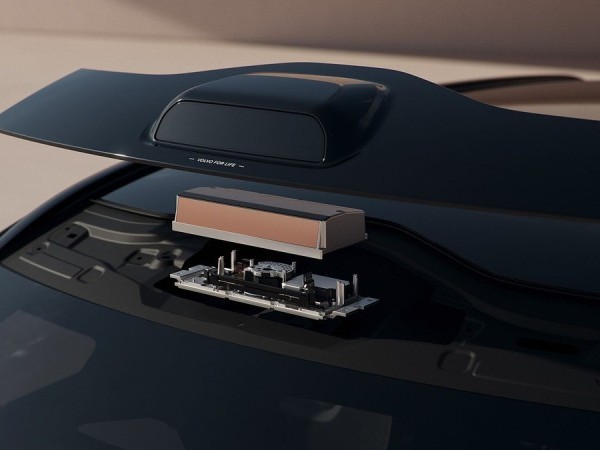
Warning: Vehicle LiDAR Can Damage Your Phone Camera!
AshleyMay 19, 2025

Well-Planned Space: The Exceptional Practicality of the Volvo XC60
Kevin WongMay 16, 2025
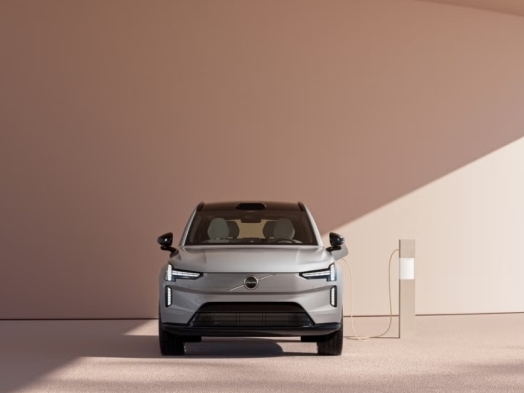
Volvo EX90 Electric SUV Now Available – RM 442,888
LienApr 11, 2025
View More










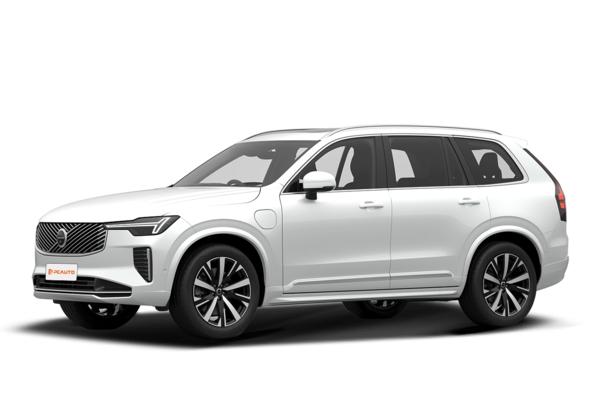





Pros
Cons